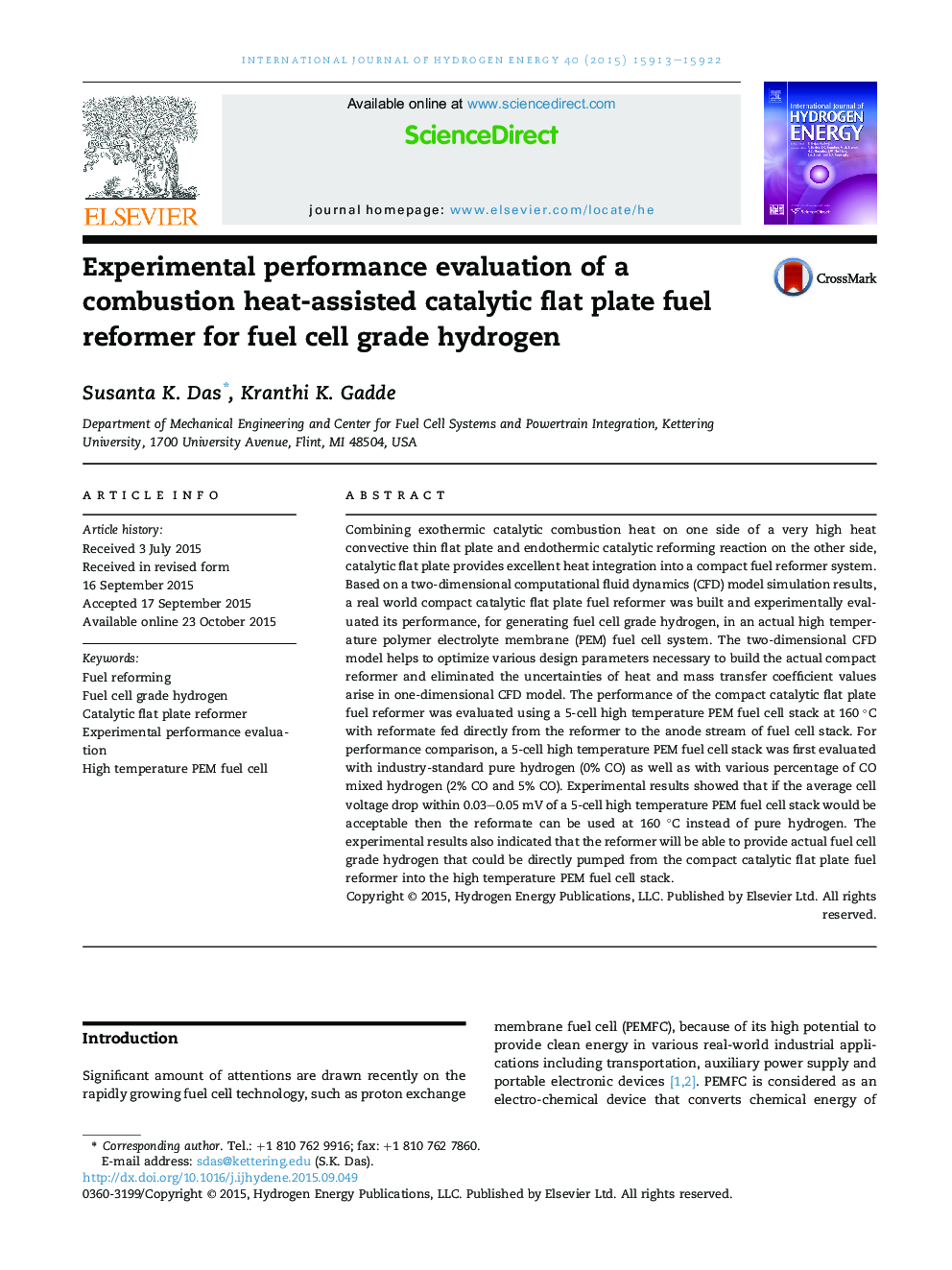| Article ID | Journal | Published Year | Pages | File Type |
|---|---|---|---|---|
| 7713075 | International Journal of Hydrogen Energy | 2015 | 10 Pages |
Abstract
Combining exothermic catalytic combustion heat on one side of a very high heat convective thin flat plate and endothermic catalytic reforming reaction on the other side, catalytic flat plate provides excellent heat integration into a compact fuel reformer system. Based on a two-dimensional computational fluid dynamics (CFD) model simulation results, a real world compact catalytic flat plate fuel reformer was built and experimentally evaluated its performance, for generating fuel cell grade hydrogen, in an actual high temperature polymer electrolyte membrane (PEM) fuel cell system. The two-dimensional CFD model helps to optimize various design parameters necessary to build the actual compact reformer and eliminated the uncertainties of heat and mass transfer coefficient values arise in one-dimensional CFD model. The performance of the compact catalytic flat plate fuel reformer was evaluated using a 5-cell high temperature PEM fuel cell stack at 160 °C with reformate fed directly from the reformer to the anode stream of fuel cell stack. For performance comparison, a 5-cell high temperature PEM fuel cell stack was first evaluated with industry-standard pure hydrogen (0% CO) as well as with various percentage of CO mixed hydrogen (2% CO and 5% CO). Experimental results showed that if the average cell voltage drop within 0.03-0.05 mV of a 5-cell high temperature PEM fuel cell stack would be acceptable then the reformate can be used at 160 °C instead of pure hydrogen. The experimental results also indicated that the reformer will be able to provide actual fuel cell grade hydrogen that could be directly pumped from the compact catalytic flat plate fuel reformer into the high temperature PEM fuel cell stack.
Related Topics
Physical Sciences and Engineering
Chemistry
Electrochemistry
Authors
Susanta K. Das, Kranthi K. Gadde,
